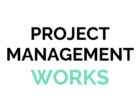Check out our advice and tips on all things to do with Business Analysis: Requirements Gathering, Business Requirements Documentation, Risk Management, Change Management and more. How analysis, project scope, scope creep, change procedures and risks affect a project and how to ensure you can help a project to be a success and deliver what the business needs, on-time and on-budget.
CONTENTS
Project Scope and Its Importance
Business Requirements Analysis and Why It’s Important
Documenting the Detailed Requirements
The Perfect Business Requirements Document
Project Scope and Its Importance
You know how you sometimes overhear a snippet of conversation – on a train, in a shop or restaurant – and it gets you thinking about a subject close to your heart. You want to join in the discussion – you can feel a heated debate arising – but the people in conversation have moved on.
You may well have misunderstood them and, given that you didn’t hear the whole conversation, they may well have come around to your way of thinking. But you can’t help churning it over in your mind (well not if you are anything like me anyway).
The topic of conversation I overheard recently was about project scope and its importance in the success of a project. The type of project (or activity or product) was irrelevant to the discussion – it could have been any business or personal project.
One of the protagonists believed that not only should the scope be clearly defined but what was NOT in scope should also be clearly defined. The antagonists thought that documenting (or indeed thinking or worrying about) what was not in scope was a waste of time. There could be a million things that are not in the scope of a project, they argued. But I believe they missed the point completely.
If you have worked as a business analyst on many projects during your career then you are certain to have come across situations like these:
- There’s a mismatch between what is delivered and what was wanted by the client
- Requests for major changes are made halfway through a project
- Different clients on the same project have different requirements
- Changes are requested immediately after the project is completed
These are all signs that the scope of the project was not clearly defined or, more likely, what was not in scope was not discussed or documented. So the antagonists in the argument I overheard can continue to believe it is unimportant to define what is not in scope, if they wish, but the end results of their projects are likely to have some, if not all, of the above problems.
If you do not define exactly what is not in the scope of the project then those involved – whether they are project managers, team members, end users or stakeholders will make assumptions. It is then likely that their expectations will not match the expectations of those delivering the work.
 It is essential, in my opinion, to very clearly state what is not in scope in order to successfully manage the expectations of the client or customer. One of the issues that arises with agile project management, which is particularly, but not exclusively used for IT projects, is that it is aimed at moving quickly into delivering a tangible product and, therefore, less time is spent on gathering requirements, which is the phase when assumptions are often exposed. On the other hand delivering something tangible quickly can often bring the previously unvoiced assumptions out of the woodwork.
It is essential, in my opinion, to very clearly state what is not in scope in order to successfully manage the expectations of the client or customer. One of the issues that arises with agile project management, which is particularly, but not exclusively used for IT projects, is that it is aimed at moving quickly into delivering a tangible product and, therefore, less time is spent on gathering requirements, which is the phase when assumptions are often exposed. On the other hand delivering something tangible quickly can often bring the previously unvoiced assumptions out of the woodwork.
In fact, managing expectations is a skill that every good business analyst should develop early on in their career – it takes no more than an ability to communicate clearly with all those involved in a project. Although this sounds easy it is a skill that many business analysts fail to master. The reasons for this are varied – it might be a fear of questioning those in senior positions, it might be a failure to talk to those at the coal face or any number of other reasons. Whatever the reasons, fully defining the scope of a project and managing customer expectations are inextricably linked.
And the solution is simple – talk, talk openly, listen and listen without prejudice. The customer may have a role far removed from yours but they are the ones who will ultimately define the success of a project. Foster good relationships with them right at the outset and you will be rewarded with good communications that will not find you on the BIG DAY discovering that everyone “assumed” that such-and-such a feature would be delivered and it was not.
Remember Scope Matters.
Business Requirements Analysis and Why It’s Important
 Every project needs a business requirements specification document because it is the formal agreement between the client/end-users, the business owner/stakeholder and the project manager. It states exactly what will and will not be included in a project and what the end-user can expect once the project is completed. This is true for projects that are an extension of an existing status quo, such as enhancements to a software system, just as much as for projects involving brand new scenarios such as the development of new corporate policies.
Every project needs a business requirements specification document because it is the formal agreement between the client/end-users, the business owner/stakeholder and the project manager. It states exactly what will and will not be included in a project and what the end-user can expect once the project is completed. This is true for projects that are an extension of an existing status quo, such as enhancements to a software system, just as much as for projects involving brand new scenarios such as the development of new corporate policies.
Fully analysing the business requirements before embarking on a new project can lead, not only, to improvements but to a transformation of the business. So instead of ending up with a new business process, policy or system you could actually enable a substantial change in the business.
All new projects in the workplace are instigated in response to a business need or a business failing. Huge amounts of time and resources are usually expended to fulfil the business need but there is often a mismatch between what is delivered and what was actually needed. A thorough business requirements analysis can help to avoid this scenario by defining and clearly documenting the requirements for a specific business objective. It is the process that enables a clear and precise definition of the scope of a project and by breaking down the business needs into specific tasks it helps to assess the resources needed to complete the project.
Gathering Requirements
What are the best ways of getting started on the analysis process? Fortunately there are some well-recognised techniques for gathering the information needed in a Business Requirements Document. This list is not exhaustive but gives an overview of possible methods to use.
In all of these methods of gathering information, it is important to recognise that individuals from different business areas will only view the project from their own perspective and may not see the bigger picture. The analysis is intended to understand the different perspectives and document exactly what the project should achieve.
Brainstorming
Brainstorming is one of the best ways to produce lots of ideas on a particular topic in a short space of time. Set aside an hour in a relaxed environment with no distractions and invite people from all areas involved in the project. But keep the group to no more than 12 people for it to be most focussed and most effective.
The business analyst should encourage participation and a flow of ideas, which are written down on a whiteboard, flipchart, post-it notes etc. When there are plenty of thoughts, ideas and suggestions written down, the analyst then helps to determine which ideas are likely to provide the best solution and, therefore, require further discussion.
Storyboarding
Business Analysts use storyboarding to break down a project into small elements in order to focus on one element at a time. This helps to easily identify where information is lacking and where further analysis is required. It also helps in organising the work and communicating in unambiguous language to the end-users.
Interviews
Interviewing key personnel involved in the project is an extremely effective way of eliciting relevant information but it is important to interview the right people and also to make sure the interview questions stay focussed on the topic in question.
So before embarking on an analysis interview the questions should be prepared to ensure they are open questions (i.e. ones that require more than a one-word or brief answer) and that they cover the key points of: Function, Features, Preferences and User Expertise.
Prototypes
It is often difficult for people to visualise a product, process or system when it is completely new. So for projects which are not an extension or improvements of something that already exists, it is useful to produce a mock-up or model of the product or system to help end-users or clients to visualise what the final product will look like. Prototypes can help to identify inconsistencies, potential problems and usability issues. On agile projects they are less necessary because of the frequency of tangible deliverables.
Prototypes are most effective once some or all of the other techniques have been used to gather a full idea of the business requirements.
Interpreting the Requirements
 Once all the requirements have been gathered and are documented at a high-level of detail it is necessary to determine which requirements can actually be delivered and which requirements are unnecessary to the fulfilment of the business objectives.
Once all the requirements have been gathered and are documented at a high-level of detail it is necessary to determine which requirements can actually be delivered and which requirements are unnecessary to the fulfilment of the business objectives.
Some requirements are more important than others so they must all be prioritised to identify those which are fundamental to delivering a product, system or service and those which are “nice-to-have”.
It is also vital to assess the impact that the new project will have for existing processes and staffing skills and levels. For example, will members of staff need to be re-trained or will some roles become redundant?
Documenting the Detailed Requirements
Requirements must always be written down in language that is easy to understand, precise and unambiguous. Use simple language wherever possible, particularly if the document is not written in the first language of any of those who will be reviewing it. Avoid technical jargon whenever possible, but where it is necessary, clearly state exactly what a term means. Effort expended at this stage will avoid too many change requests throughout the project, although managing change will always be an essential part of any project no matter how well documented the requirements are.
The document must contain sufficient detail that the new product, process or service can be created, tested and ultimately become a “live” product.
All of the requirements must be measurable or quantifiable and it must be possible to test the new product to verify that it meets the business objectives. Every individual task in the requirements document must contribute, even if indirectly, to the end result.
This check-list covers the basics of a Business Requirements Document but writing effective requirements using industry standards and best practices is covered in the next chapter:
- Clear, unambiguous wording
- Sufficiently detailed to create the product/process
- Test cases and conditions can be easily defined
- It is possible to achieve the desired final product/process
- Design independent
- Each requirement can be tracked in the final product/process
- Every requirement is necessary to satisfy the business objectives
Agreement and Sign Off
Before embarking in earnest on the project work it is vital that the project manager gets the signed agreement of the business requirements document from the stakeholders. This is their formal commitment that the document accurately and thoroughly describes the business needs.
The Perfect Business Requirements Document
A Business Requirements Document is a formal document that effectively provides a contract between a “supplier” and a “client”. The “client” is typically a business department and the “supplier” is the company or other business department that will create and deliver the new product, system or process. The document describes in detail every business need and is written in response to a known business problem or shortcoming. The Business Requirements Document is not expected to describe in detail the solution to the business needs but to describe what the business wants and needs. For technical products, such as new or modified software systems, further technical specifications will be prepared.
 Various techniques, such as brainstorming, story boarding, use cases and interviews, will have been used to gather the requirements during a business requirements analysis process. That information needs to be written down in a clear, concise format in language familiar to the business users. The process of documenting and refining the business requirements helps to identify conflicting requirements and potential issues early on in the project lifecycle. It is the key document in the effective project management of any type of project.
Various techniques, such as brainstorming, story boarding, use cases and interviews, will have been used to gather the requirements during a business requirements analysis process. That information needs to be written down in a clear, concise format in language familiar to the business users. The process of documenting and refining the business requirements helps to identify conflicting requirements and potential issues early on in the project lifecycle. It is the key document in the effective project management of any type of project.
The business requirements document effectively defines the Scope of a project. This is the description of what will be included in the project and also what is specifically excluded from the project.
Scope is a definition of the limits or boundaries of a project and the reason it is so important is because poor management of the project scope is one of the major causes of project failure. Good management of the project scope by the project manager involves 3 key factors:
- devote adequate time to fully defining the requirements
- reach a formal agreement on the scope with the stakeholders
- avoid scope creep
Scope Creep
Scope creep is when un-authorised or un-budgeted tasks lead to uncontrolled alterations to the documented requirements during the course of the project. The business requirements document should address the possibility of requests for additional tasks in a project and state how they will be dealt with. This usually involves a formal Change Request Procedure that requires the agreement of all stakeholders to any changes of specification, budget or delivery time. The fact that the business requirements document is a formally approved document assists the business analyst in implementing and sticking to a Change Request Procedure.
There is, of course, a tendency for changes to be requested during the life of a project. As projects progress, the end-users inevitably see areas where additional features could provide increased benefits. And the purpose of scope management is not to prevent such changes either being requested or implemented, but to ensure that all changes bring substantial, well-defined benefits. And that the budget will be increased accordingly and that the extended duration of the project is acceptable to all parties involved. Failure to manage scope adequately undermines the viability of the whole project as approved in the Business Requirements Document.
All changes to the requirements, budget and schedule must be approved by all stakeholders. In large projects it is common for end-users to see their opportunity to have all the “nice-to-have” elements added while major changes are underway – to some extent this is understandable but only if the new features add real business value such as efficiency or accountability and do not require the project to change in such a way as to lose sight of the original business needs that instigated the project in the first place
Document Iterations
A business requirements document is likely to need several iterations before it is close to reaching a document acceptable to all stakeholders. Writing such a document can be a complex and intricate process and will probably need many more iterations before approval is actually achieved. This is no reflection on the thoroughness of the analysis process but rather on the simple human difficulty in translating thoughts and speech into clear, unambiguous and thorough wording on the page. Whilst adequate detail is required to fully define the requirements, conversely, too much detail prevents the readers from absorbing the key points. Writing a document that achieves this balance is a skill in itself.
Fortunately, there are a number of best practice approaches and industry standards that can be used to good effect when writing a business requirements document. These will assist in defining the project scope and managing scope creep once the project is underway.
Key Document Elements
As the author of the business requirements document the business analyst should have an understanding of the different levels of requirements and the different elements within the requirements. They must be able to state the business needs clearly, understand the current business process and the key business objectives driving the project.
The following list, whilst not exhaustive, covers the main areas that should be documented in a business requirements document:
o Business Problem Statement
o Current Business Process
o Scope Statement(s)
o Key Business Objectives
o Project Completion Criteria
o Limitations
o Risks
o Assumptions
o Functional Requirements
o Non-Functional Requirements
o Features and Functions
o Reporting Requirements
o Delivery Method
o New/Modified Business Process
o Data Retention/Archiving
o Training
o Stakeholder List
o Quality Measures
o Checklists (Process and Requirements)
Ensuring each of these elements is incorporated in to the document with sufficient detail and clarity is the first step to creating a perfect business requirements document.




